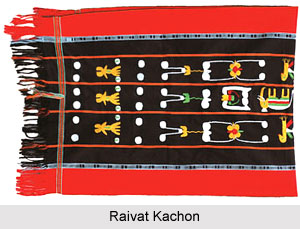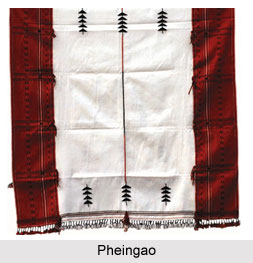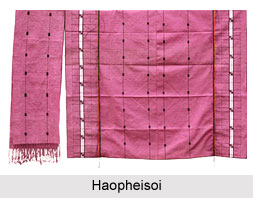 Handlooms of Manipur are famed throughout the country for their exquisite designs. One of the largest cottage industries of the state includes these handloom industries which are blooming since ages. The unique feature of the industries creating handlooms in Manipur is that only women are the weavers. Handloom industry form an important part of the socio cultural heritage of the state and the legacy has been carried through generations.
Handlooms of Manipur are famed throughout the country for their exquisite designs. One of the largest cottage industries of the state includes these handloom industries which are blooming since ages. The unique feature of the industries creating handlooms in Manipur is that only women are the weavers. Handloom industry form an important part of the socio cultural heritage of the state and the legacy has been carried through generations.
Mythological History on Handlooms of Manipur
Myths say that a goddess, Chitnu Tamitnu, had discovered cotton in ancient past and also created the yarn. She formed the work shed, "Sinnaishang" after preparing the threads for weaving and arranging the required equipments. Another belief also prevails that the goddess Panthoibee got the idea of weaving by observing the spiders weaving their cobwebs with fine threads produced by them.
People Making Handlooms of Manipur
Majority of weavers who are skilled in weaving and rendering intricate designs to the handlooms belong to Bamon Kampu, Wangkhei, Utlou, Khongman and Kongba. The excellent specimens of this craftwork are the tribal shawls. Five hill district of the state are specialized in making beautiful designs and motifs. The exotic shawls and unique fabric of the state have captured not only national but also the international market. Presently, three government organizations are involved in handloom production activities namely Manipur Development Society (MDS), Manipur Handloom and Handicrafts Development Corporation (MHHDC) and Manipur State Handloom Weavers Co-operative Society (MSHWCS).
 Changkhom
Changkhom
Changkhom is referred to the shawl of Tangkhul tribe of the state. This tribe has eleven categories of hand woven cloths. Mostly these cloths are woven on loin loom and frame loom. These cloths have ubiquitous characteristics and are worn by both men and women. Red colour is dominant in Tangkhul cloth which is complimented by black or white. These fabrics have also been diversified into a number of products like curtain, cushion cover and wall hanging. Both acrylic and mercerized yarn produce these cloths.
Raivat Kachon
Raivat Kachon is another type of shawl of Tangkhul tribe which is included among the eleven types of hand woven cloths. It is woven with acrylic yarn on lion loom. This cloth also exhibits ubiquitous characteristics but is generally worn by women. It possesses hand embroidered designs of insects and animals.
Mareipan
Mareipan is the name for the shawl belonging to Kabui tribe of Manipur. This tribe has fourteen categories of hand woven cloths out of which seven are used by women and seven by men. Mostly they are woven on lion loom. The borders of these cloths are beautifully designed and white colour is predominant. Black and red form the complimentary combinations for Mareipan. Mercerized and acrylic yarns are used to make them.
 Pheingao
Pheingao
Pheingao is another shawl of Kabui tribe, worn by both men and women. Lion loom are used traditionally to form these however the use of frame loom is also becoming common. Similar to Mareipan, these cloths also exhibit predominance of white colour.
Cotton Sari
Cotton Sari is the most significant and traditional garment of the state of Manipur. Made of 100 percent cotton, these saris are made on throw and shuttle looms. The designs of these saris include tribal as well as floral motifs. Traditional temple designs are also quite common.
Silk Sari
Silk Saris of Manipur are prepared with 100 percent silk and are woven on fly shuttle and throw looms. Floral, temple and tribal designs adorn these saris.
Haopheisoi
Haopheisoi is another hand woven fabric of Manipur which are prepared on fly shuttle loom. Acrylic or mercerized looms are used in the production of this fabric. Haopheisoi are made by Kabui community. The fabrics are embellished by border and longitudinal warp designs, traditional motifs and traditional knotting.






